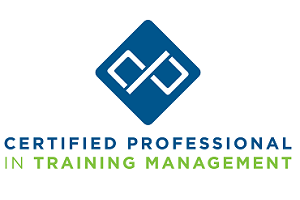Does the mere thought of standing in front of a crowd or engaging in networking scenarios induce anxiety and panic? Yet you know speaking and networking events are integral aspects of your role as a training professional or consultant.
This article outlines effective strategies to help you overcome your fear of public speaking and networking events so that you can show up and showcase your expertise as a learning leader with confidence and composure.
1. Understanding Anxiety
Before tackling the issue of panic during public speaking or networking, it’s essential to understand the root cause of the anxiety. Sit down with a pen and paper and answer the following question: What is it about standing in front of a group of people that makes me nervous? Is it the fear of judgment, a lack of confidence or the pressure to perform perfectly? Once you identify the source of your anxiety, you can tailor your approach to address specific concerns, making it easier to manage and overcome.
2. Effective Preparation
One of the most effective ways to combat anxiety is through thorough preparation. Whether you’re delivering a presentation or attending a networking event for learning professionals, being well-prepared will boost your confidence and reduce the likelihood of panic. If you’re giving a presentation, create a detailed outline. If you’re attending a networking event, write down three or four questions to ask to start networking conversations with your peers. The more familiar you are with your material, the more relaxed and in control you’ll feel.
3. Mindfulness and Relaxation Techniques
In the moments leading up to a public speaking engagement or a networking event, practice mindfulness and relaxation techniques. When we let the jitters take control our breathing is often shallow, so a deep breathing exercise helps you to feel more focused. One of my favorite techniques is breathing in for four counts, holding your inhale for four counts, exhaling for four counts and then holding your exhale for four counts. Repeat this four of five times. Visualizing success can help calm your nerves and focus your mind. In your mind’s eye, see your presentation going well. If you are attending a networking event, see yourself making conversation and creating new business connections. If you’re giving a speech, see the audience smiling and applauding. These techniques are powerful tools to center yourself, reduce anxiety and prevent panic from taking over.
4. Shifting Focus
Avoid fixating on your own nervousness. Instead, shift your focus to the message you want to convey. Remind yourself of the value you bring as a training professional and the knowledge you are there to share. When your focus is on the importance of your message rather than your anxiety, you’re more likely to exude confidence and connect with your audience or fellow networkers.
5. Establishing Connection
Establishing a connection with your audience or networking counterparts is crucial for overcoming panic. Make eye contact, smile and acknowledge the presence of those around you. In a virtual environment, turn your camera on and check your background to be sure it is distraction-free. By creating a sense of connection, you’ll find it easier to engage with your audience or network effectively, reducing the sense of isolation that can contribute to panic.
6. Striving for Excellence
Strive for excellence and avoid perfection. Perfection is an unrealistic standard that often leads to heightened anxiety. Understand that it’s OK to make mistakes or encounter challenges during public speaking or networking events. Embrace imperfections as part of the learning process and an opportunity for growth. This mindset shift will alleviate unnecessary pressure and make the experience more enjoyable.
7. Gradual Exposure
If public speaking or networking events trigger significant anxiety, consider gradual exposure to these situations. Think about how you climb a staircase. You take one step at a time. So start with one step, then add another and another until you reach your goal. Choose smaller, less intimidating settings and gradually work your way up to larger audiences or more formal networking events. This step-by-step approach allows you to build confidence and familiarity, making the process less daunting over time.
8. Seeking Support
Don’t hesitate to seek support from colleagues, mentors or fellow L&D professionals. Share your concerns and experiences with others who have navigated similar situations. Constructive feedback can provide valuable insights, helping you refine your approach and address specific areas of improvement.
Conclusion
Public speaking and networking events are opportunities for you to showcase your expertise and expand your professional networks. By understanding the sources of anxiety, embracing preparation, practicing mindfulness, shifting focus to the message, developing connections, embracing imperfections, gradually exposing yourself to these situations and seeking support and feedback, you can effectively navigate these scenarios with confidence and composure.
Remember: It’s not about eliminating nerves entirely but about managing them in a way that allows you to shine in your role as a learning professional.





